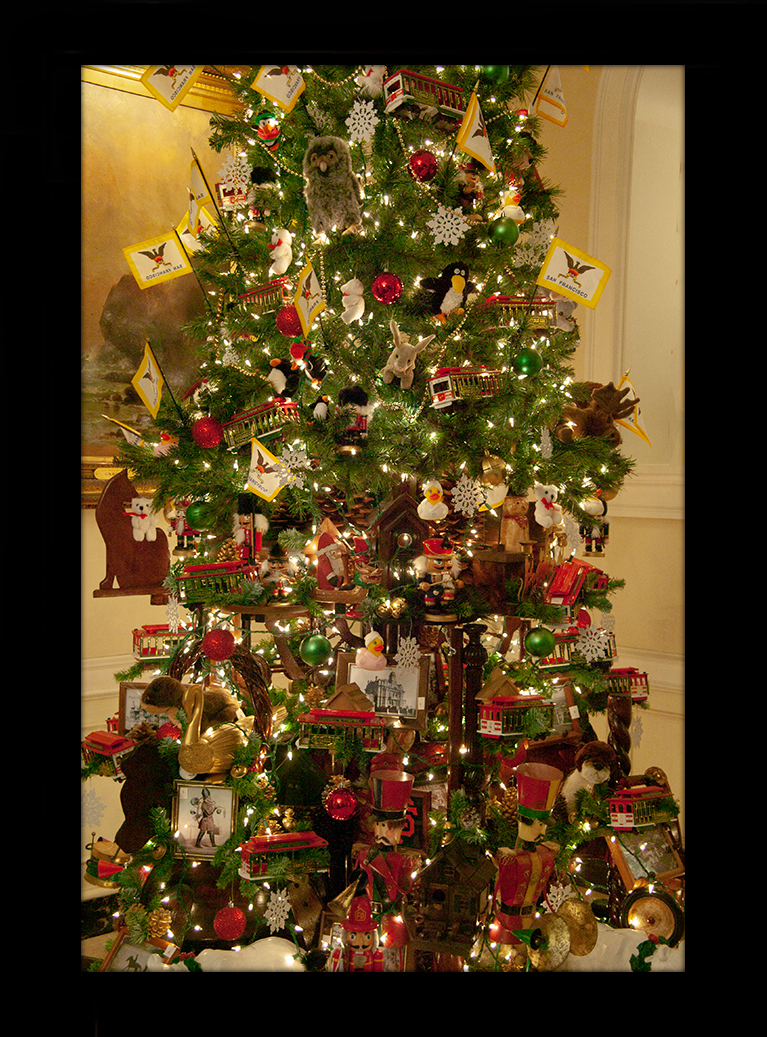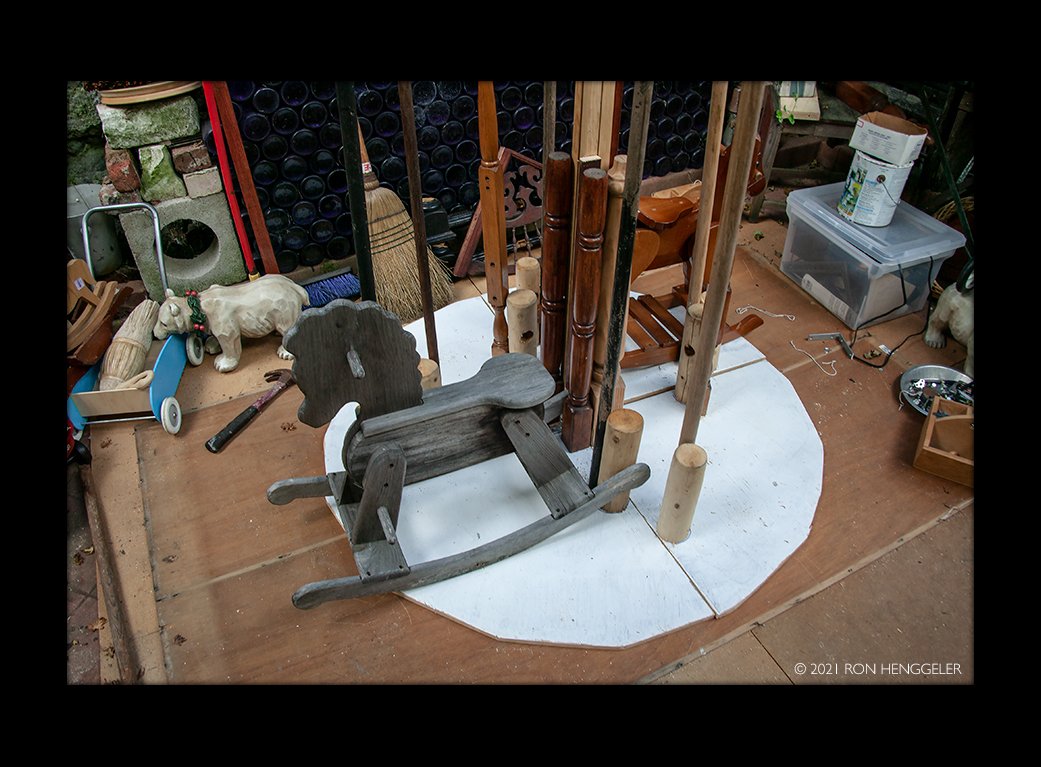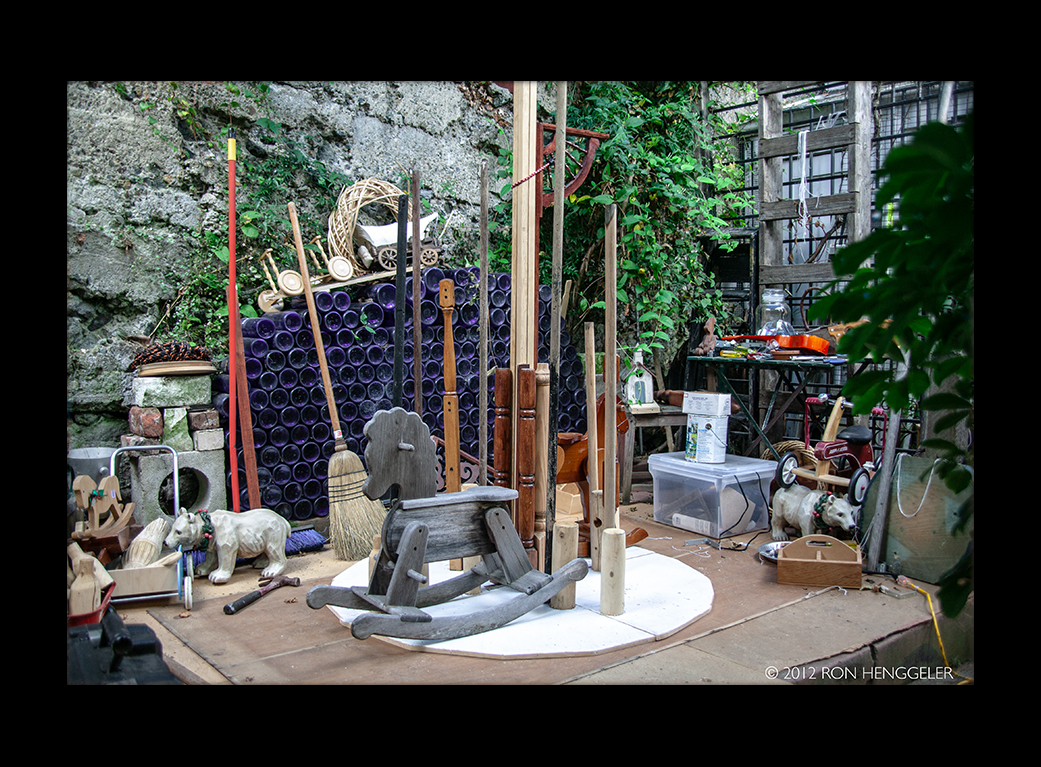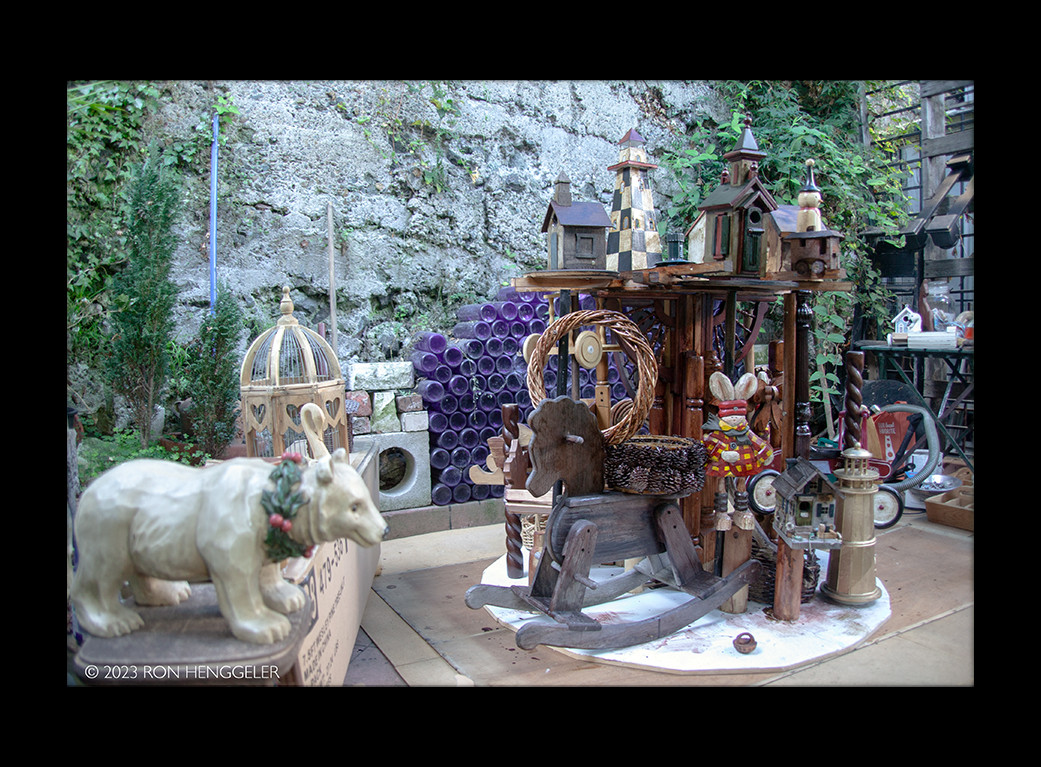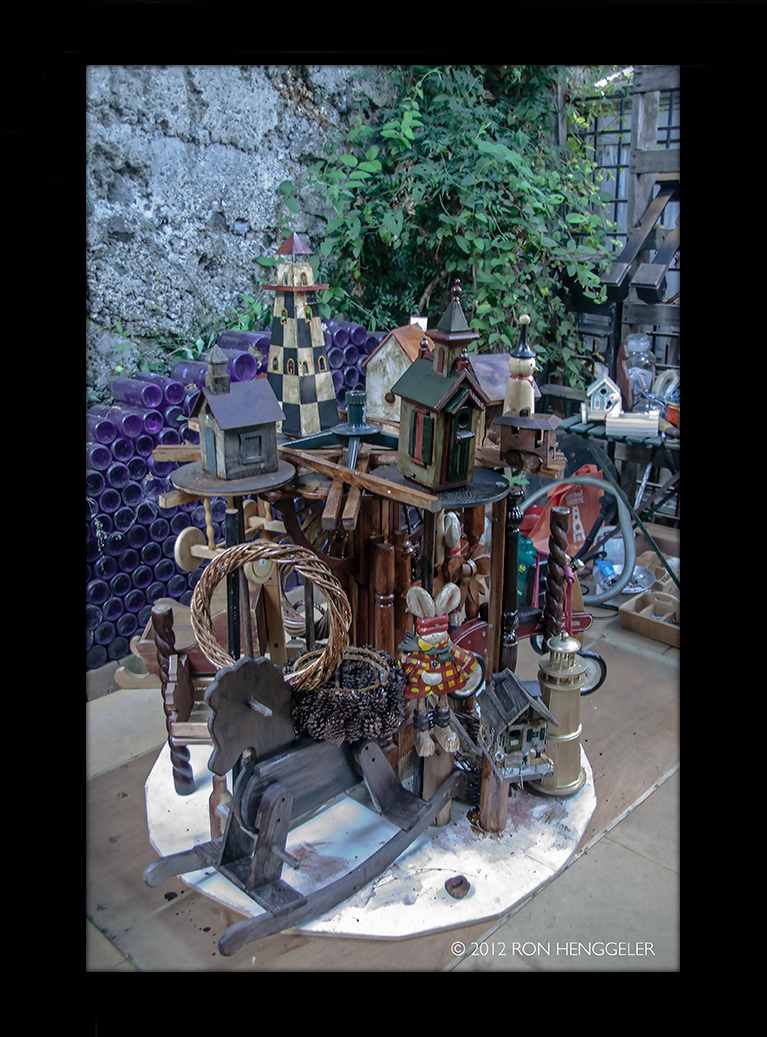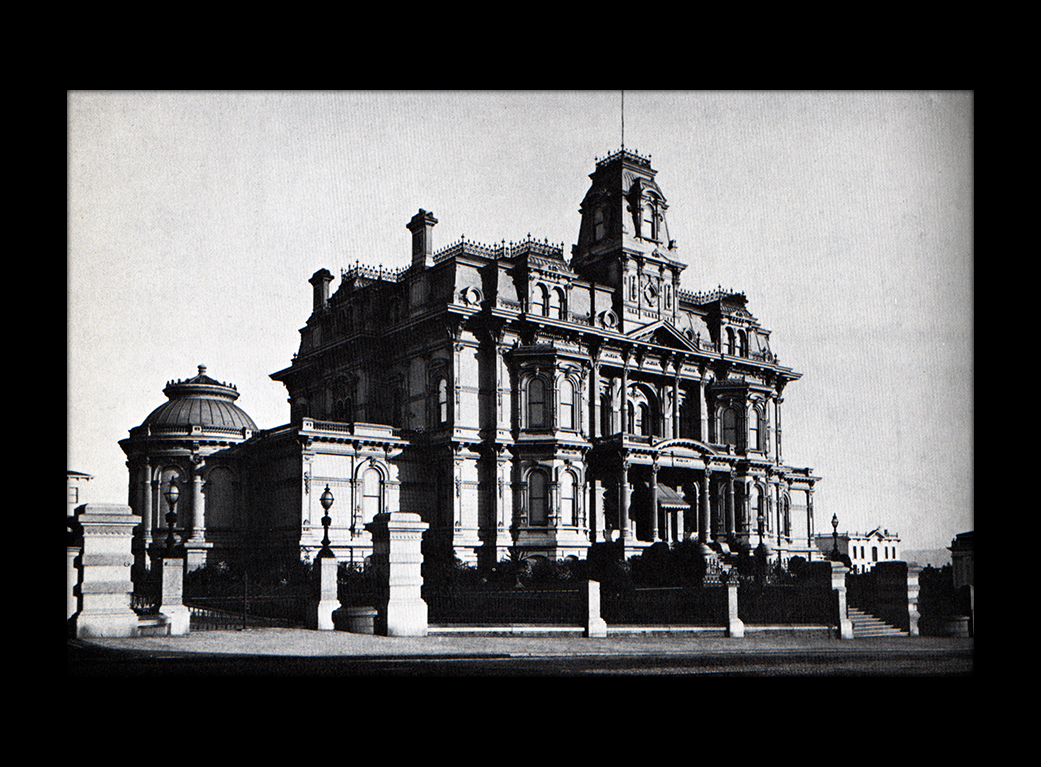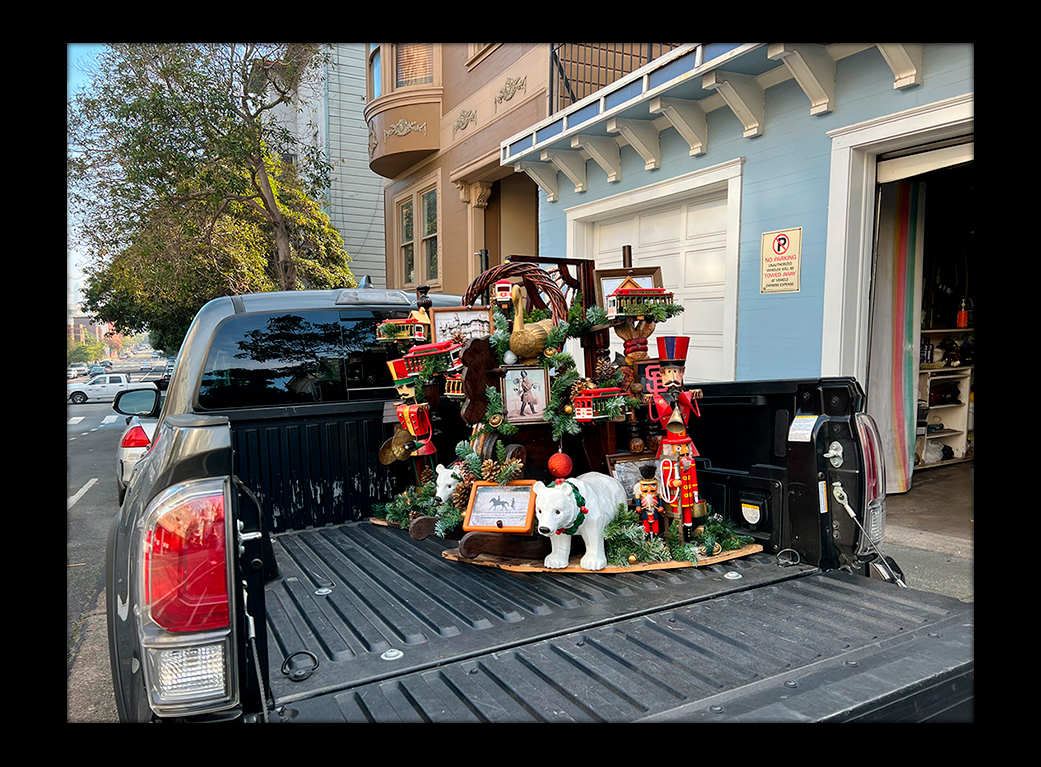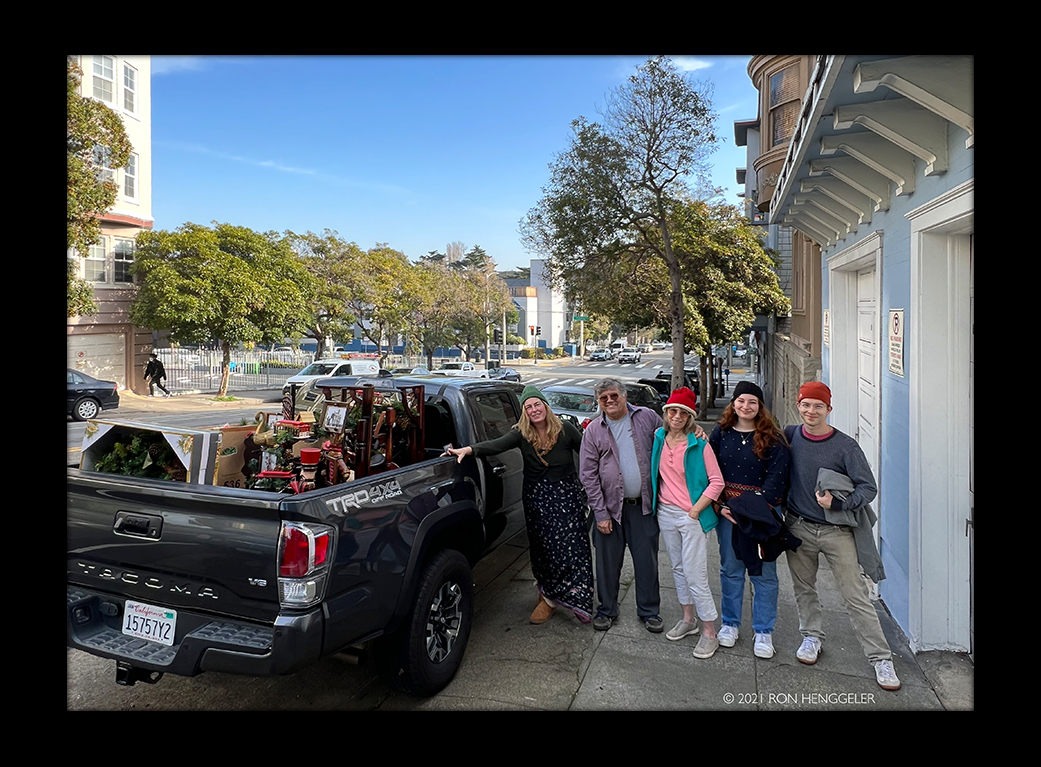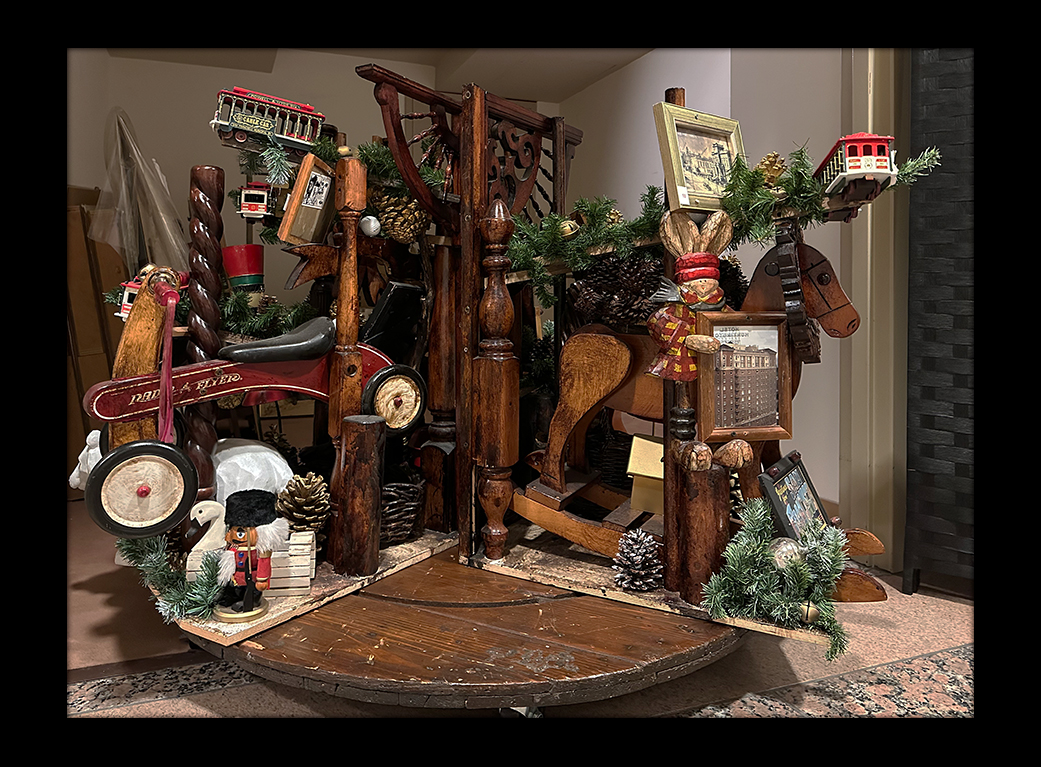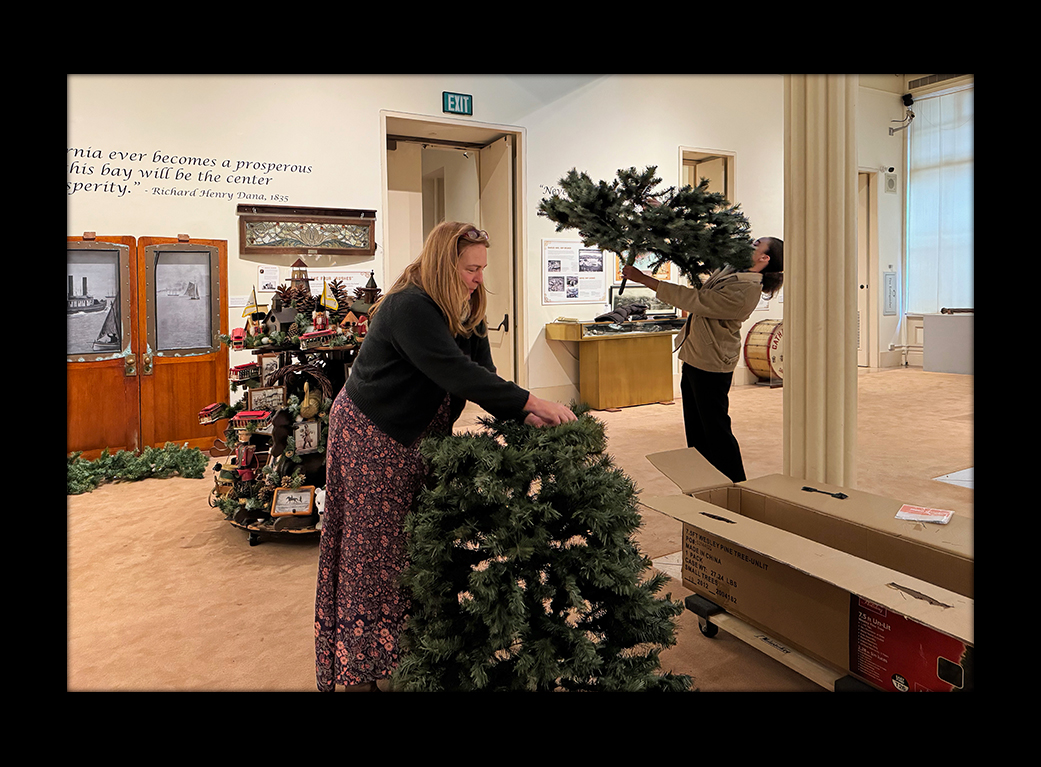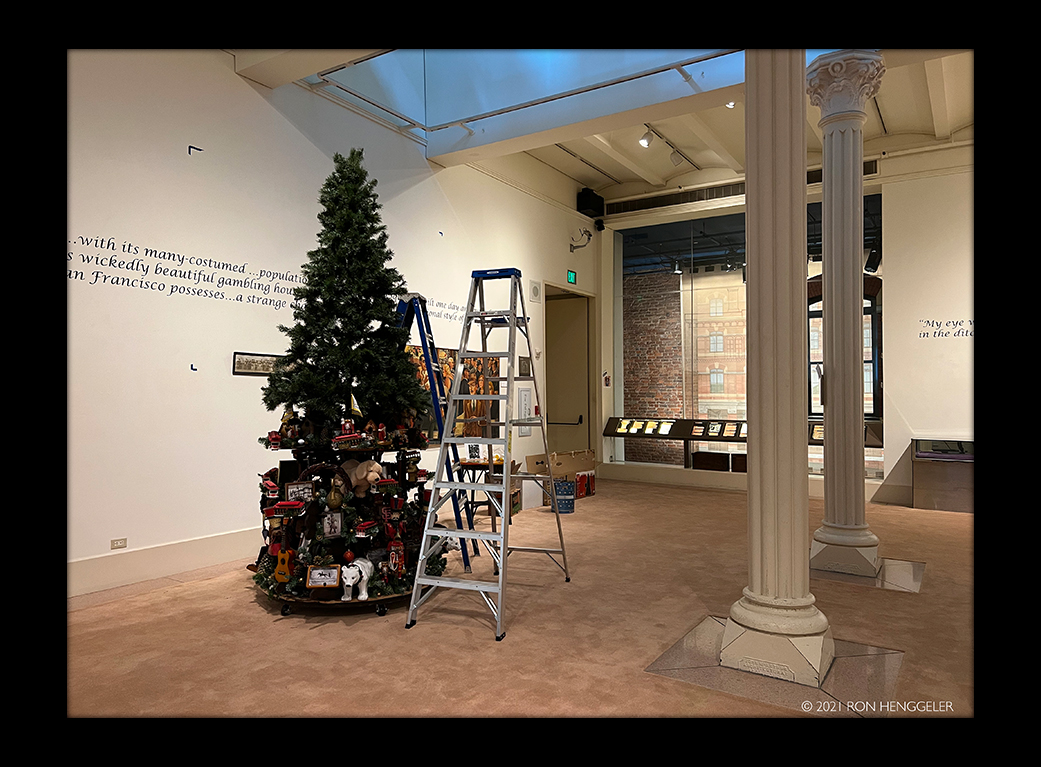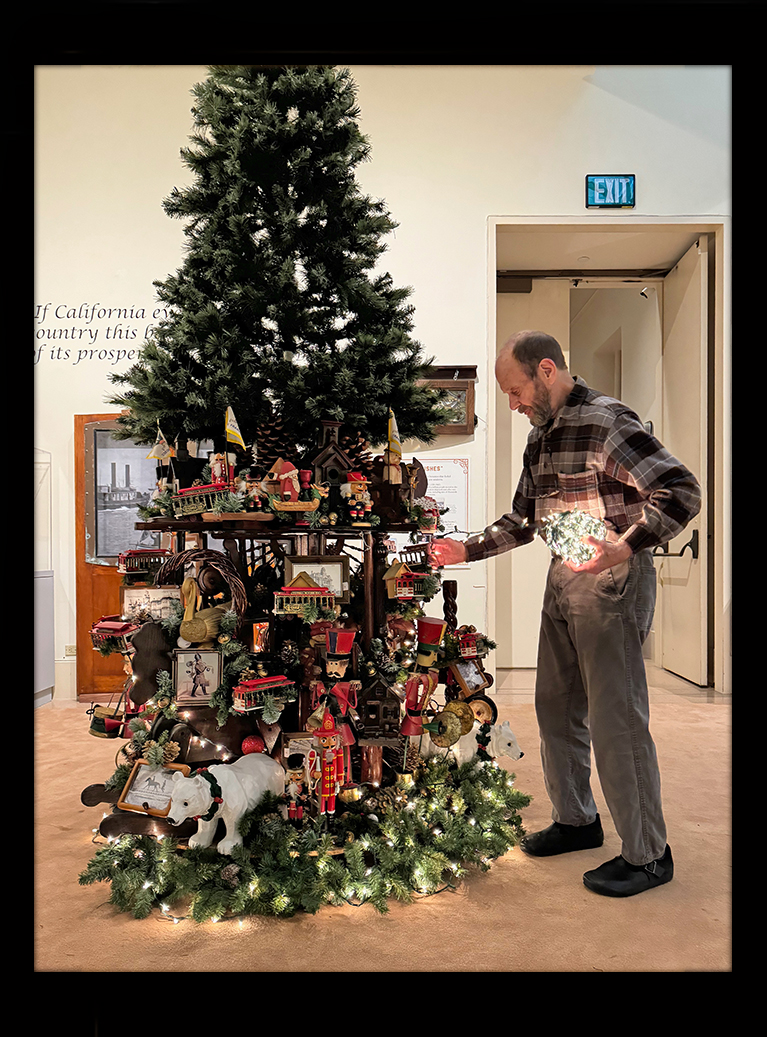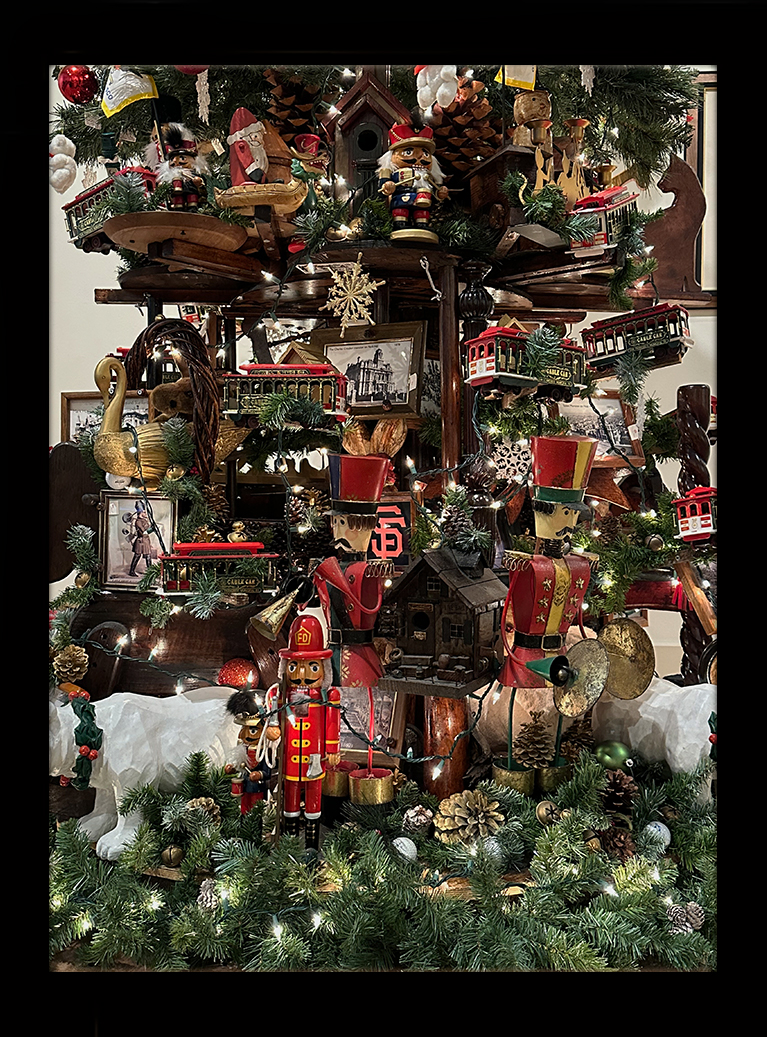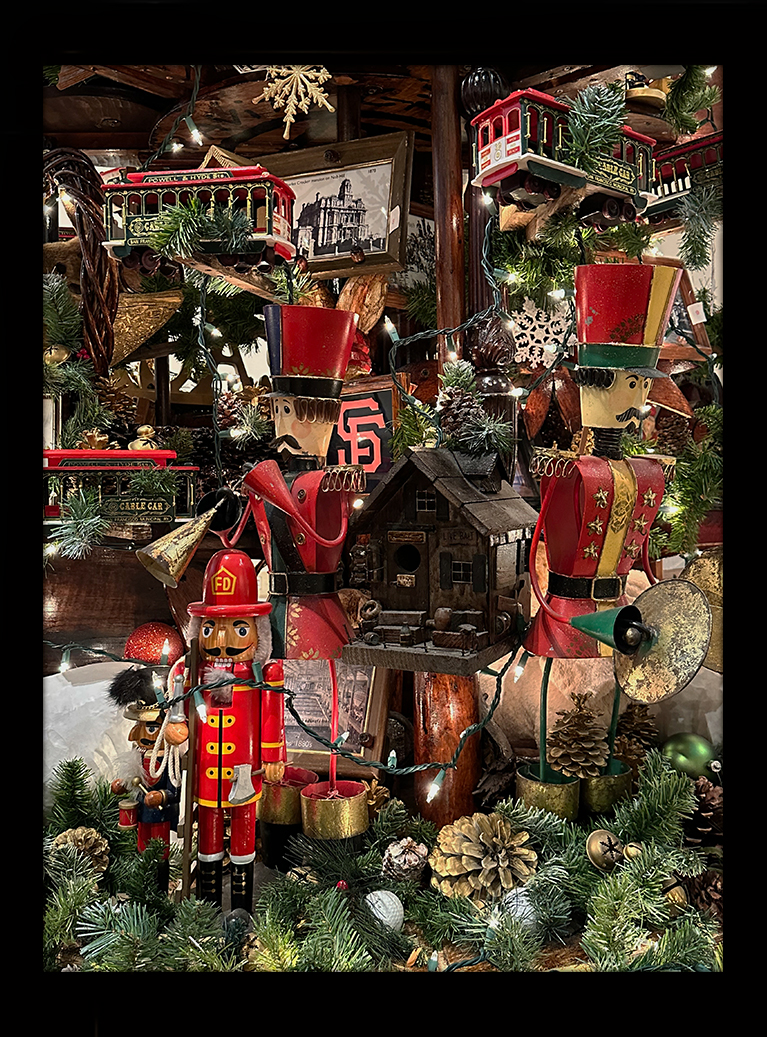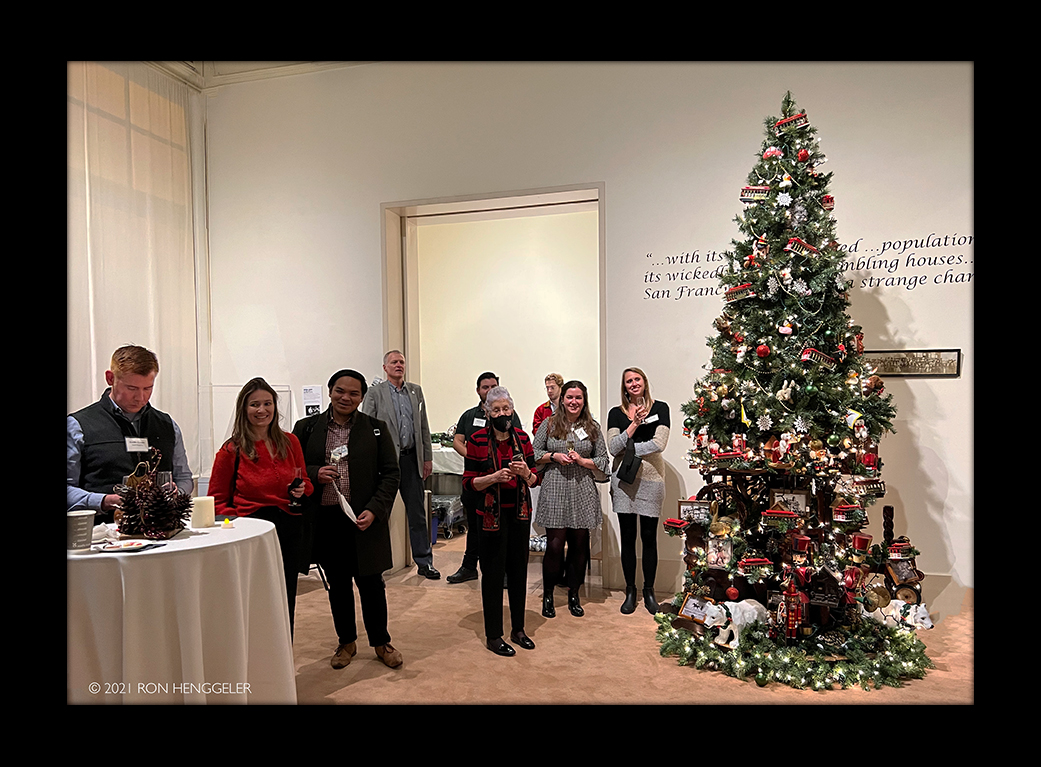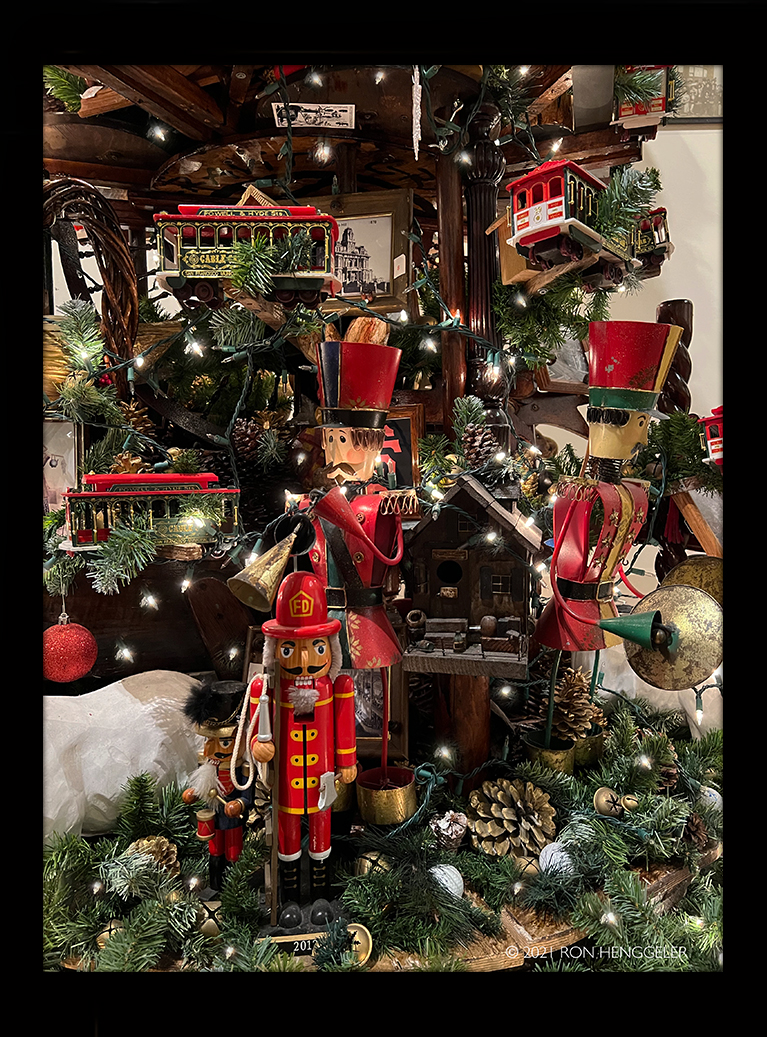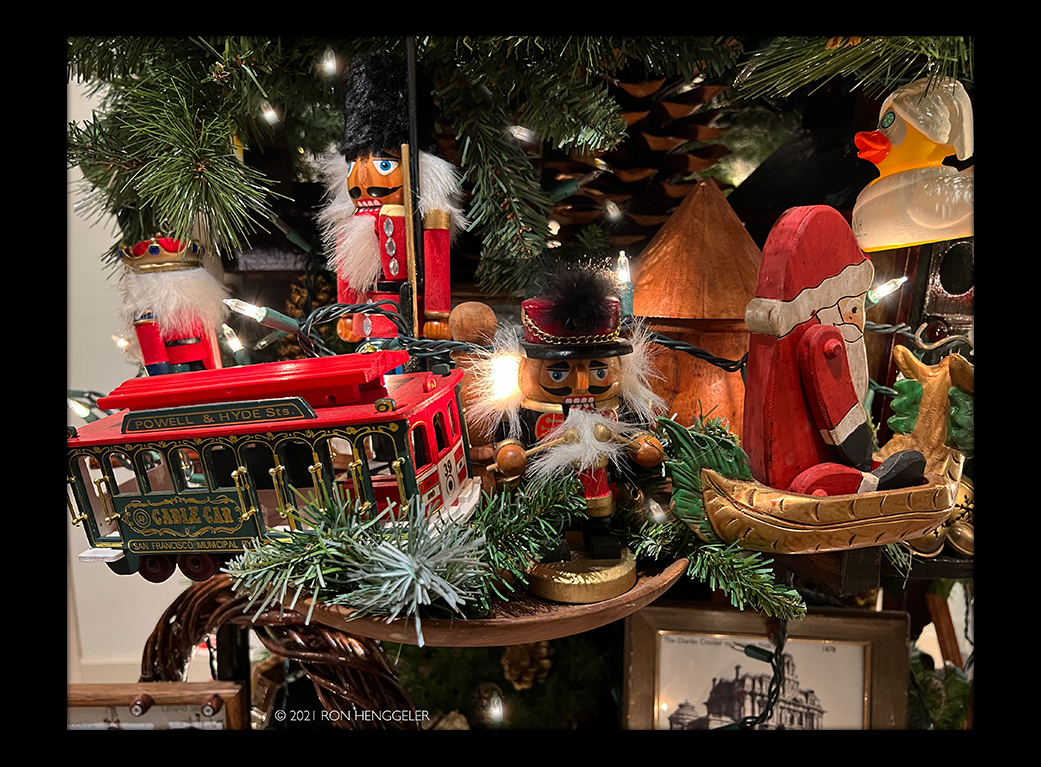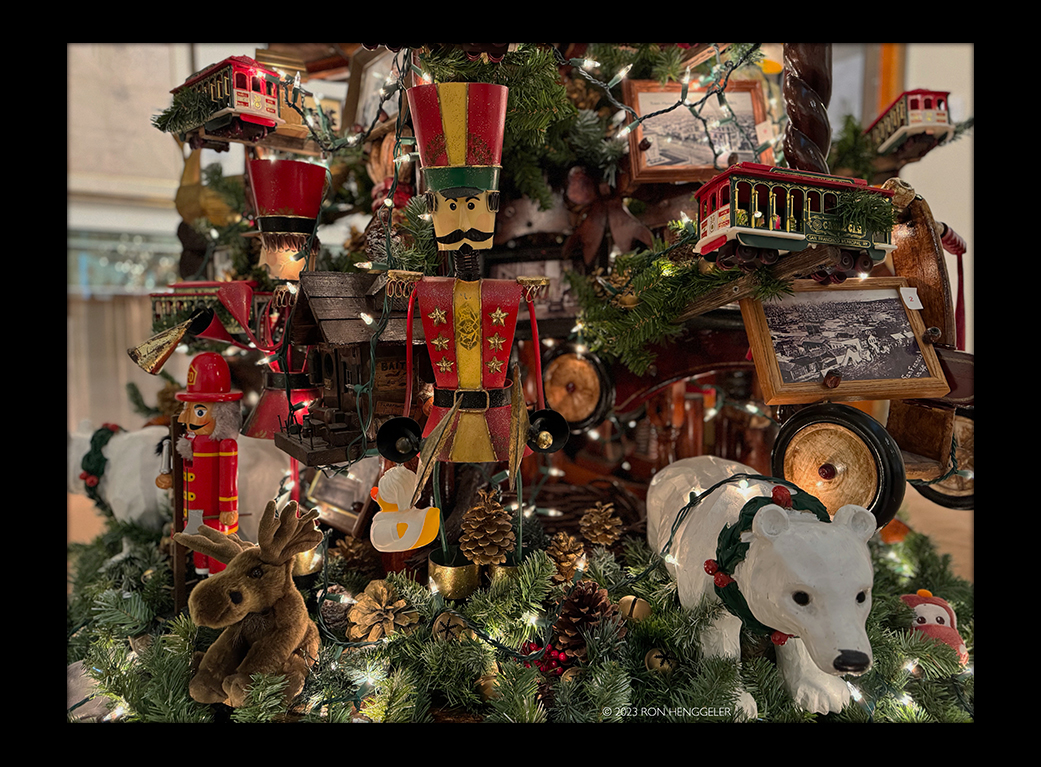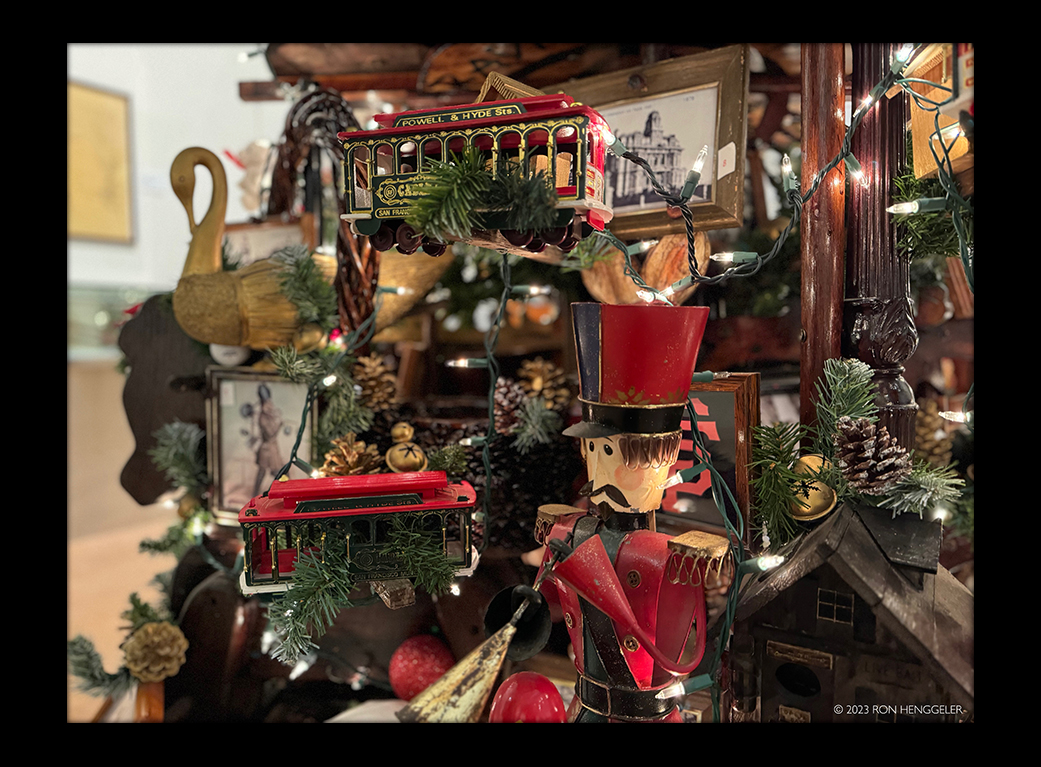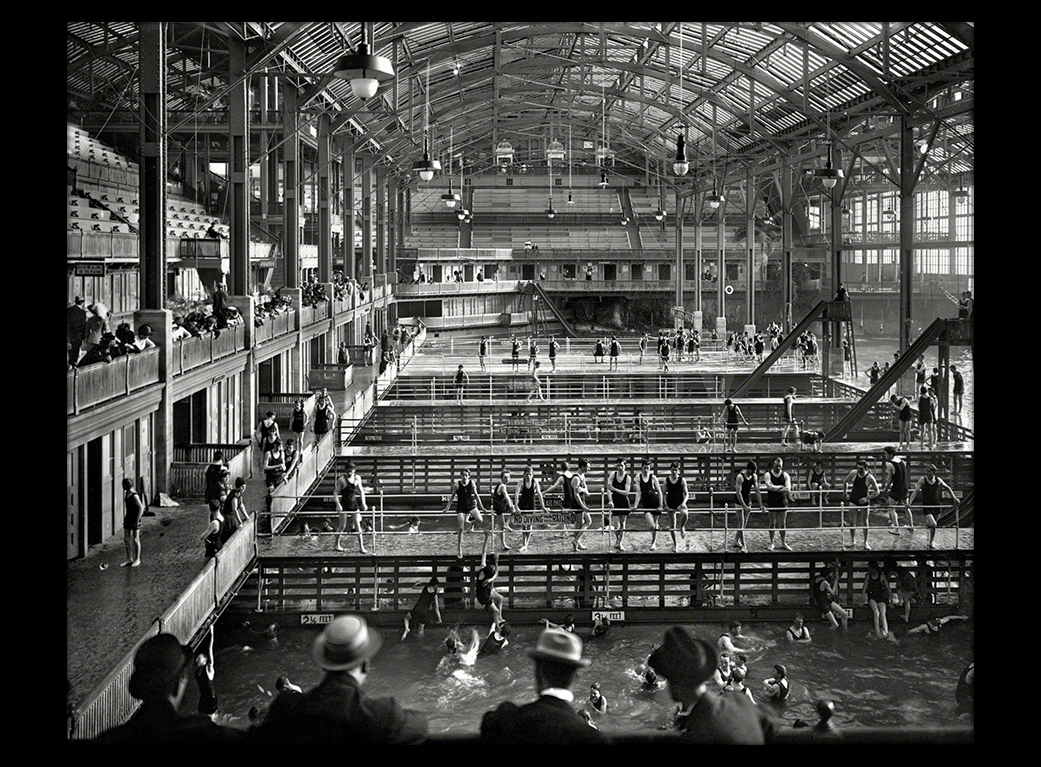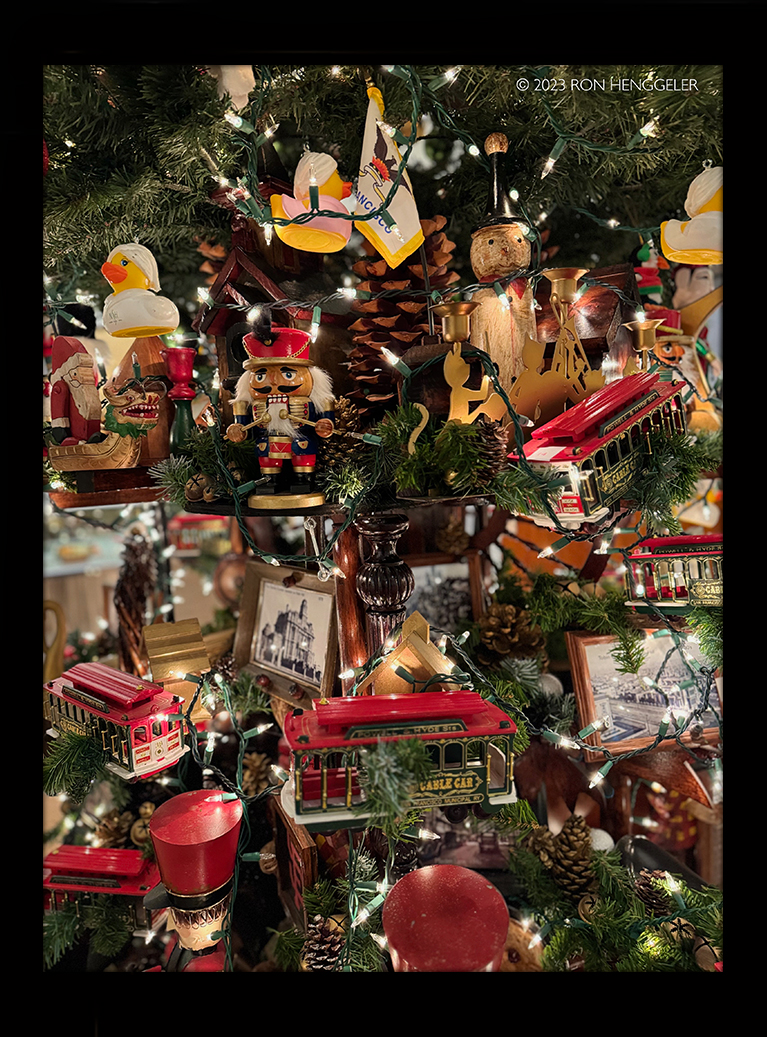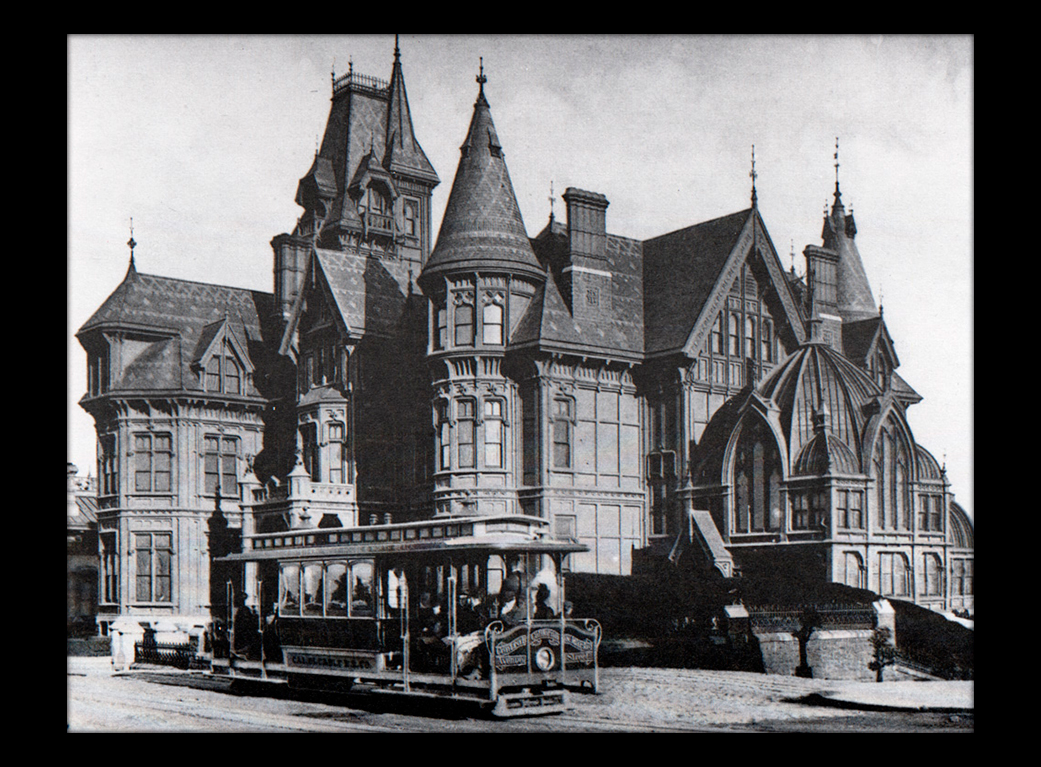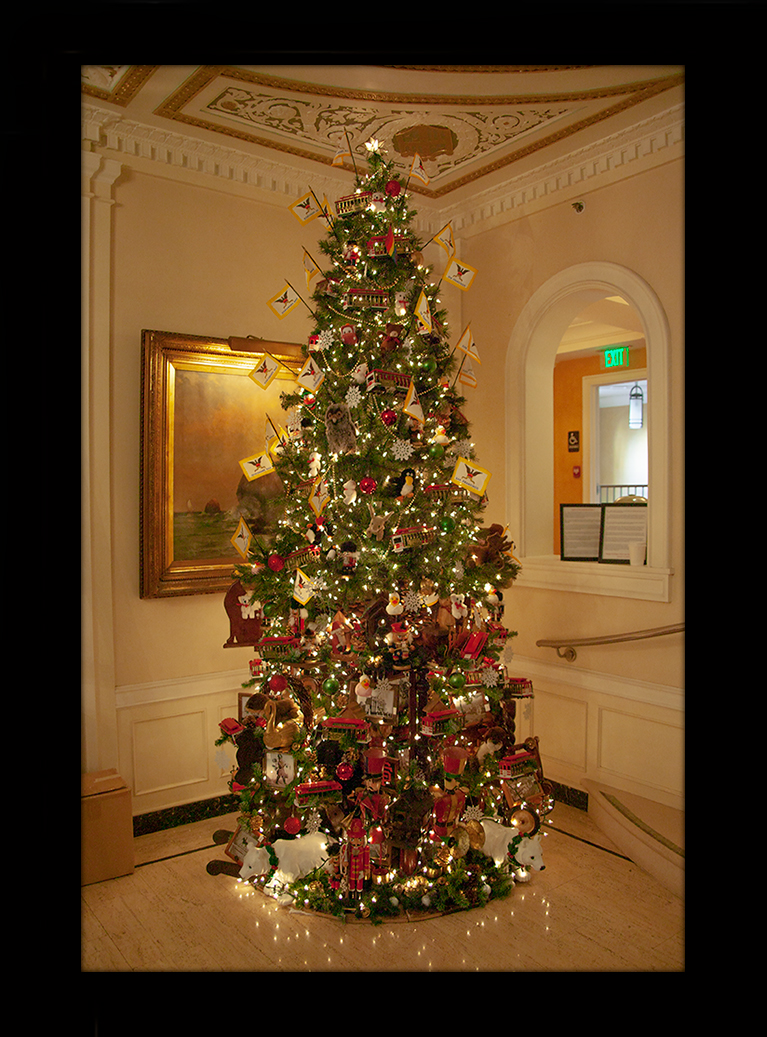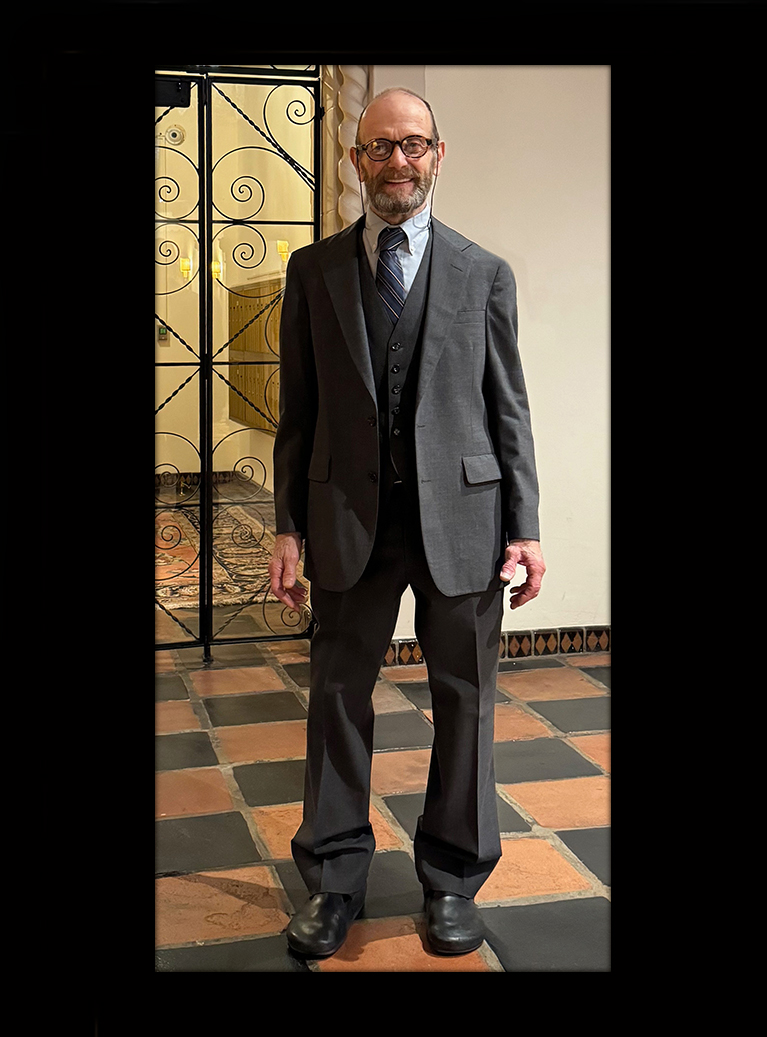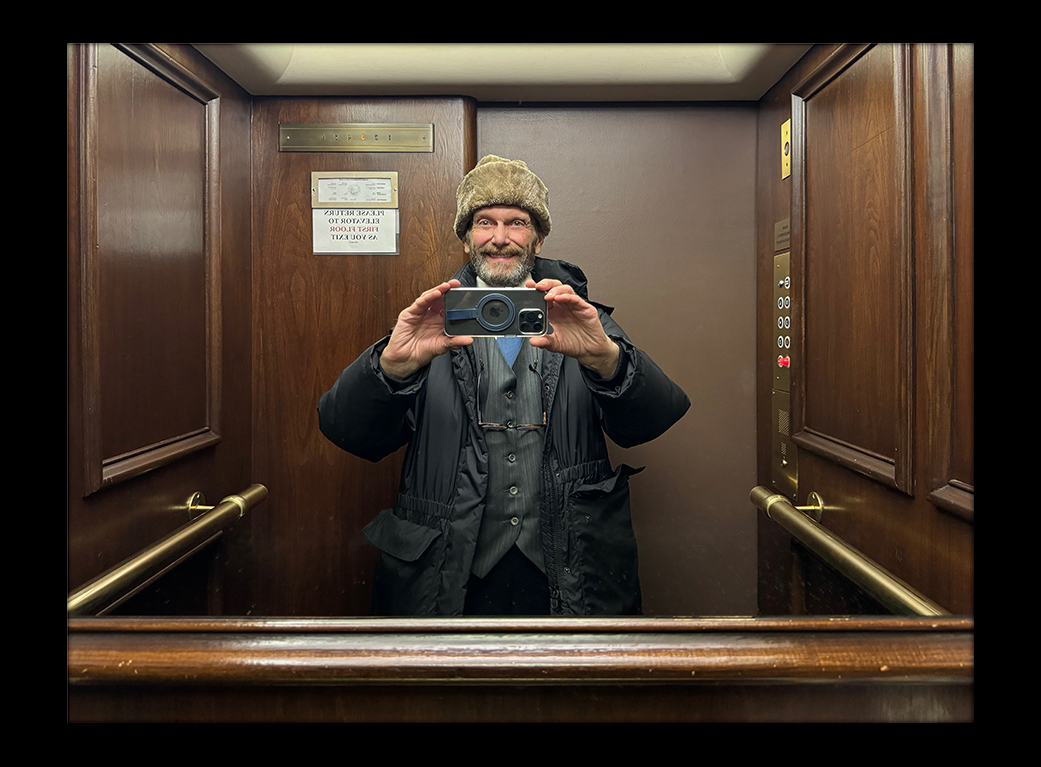RON HENGGELER |
December 6, 2023 |
||
The SFHS Museum’s Christmas tree is a sculptural piece that was once displayed during the holidays in the lobby of the Huntington Hotel on Nob Hill. The 12ft-tall tree is a sculptural construction composed of children’s toys, red-roofed cable cars, and small framed pictures of San Francisco and Nob Hill in the 19th century. It comes apart in four pie-shaped pieces. I created the sculptural tree in 2011 specifically for the Huntington Hotel. The tree was inspired by two cable car/pine cone candelabras that I had built years earlier in 2007 for the dining room cradenzas in the Big 4 Restaurant.I donated the SF history-themed tree to the SFHS Museum in 2021. |
||
|
||
Lana Costantini, SFHS Publishing and EducationThe San Francisco Historical Sociey exists to uncover, preserve, and present,
|
||
|
||
The origins of the name Nob Hill |
||
|
||
|
||
The 5-piece 12ft-tall sculptural construction assembled for the December holidays in the lobby of the Huntington Hotel on Nob Hill in 2012.It was displayed during the holiday season in December for several years. |
||
|
||
|
||
The beginning of construction on the holiday tree. I began putting the pieces together in October 2011. |
||
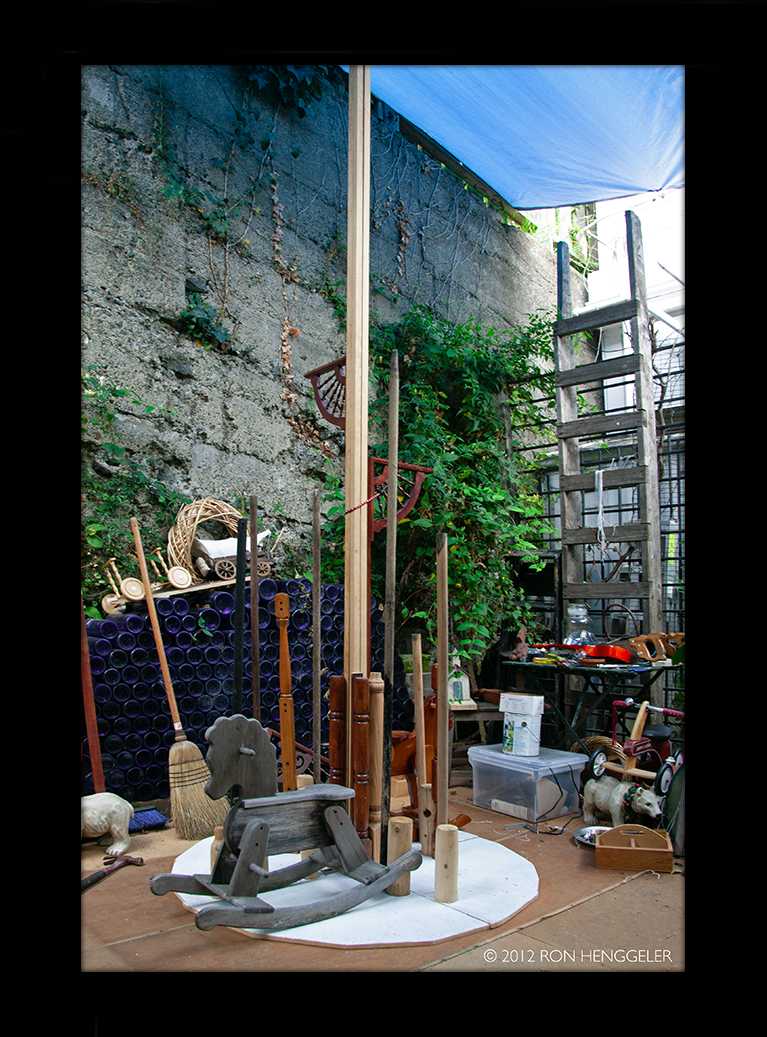 |
||
Because of the size that I had planned for the tree construction, I built the piece in five sections on the patio in the backyard. |
||
|
||
|
||
Many of the toys and wood pieces that were used in the construction of the holiday tree came from my attic. |
||
|
||
A cable car/ pinecone candelabra that I created for the Big 4 Restaurant's dining room cradenzas in 2007. |
||
|
||
Creating this pair of candelabras was the stimulus for my building the holiday tree. |
||
|
||
The base of the tree construction coming together |
||
|
||
|
||
|
||
|
||
|
||
One of the 18 framed images on the holiday tree constructionThe Charles Crocker mansion, circa 1890's. |
||
 |
||
|
||
|
||
One of the 18 framed images on the holiday tree constructionNob Hill, circa 1889
|
||
|
||
|
||
|
||
One of the 18 framed images on the holiday tree constructionIn November 2004 I was gifted an album of old photographs. The album was given to me by a favorite and regular customer at the Big 4 Restaurant, Ernie Bloomfield. Ernie bought the photo album at an estate sale in San Francisco. The album is over 100 years old.The photos, spanning a period beginning in 1904 and ending in 1907-08, were taken by this young woman living with her family in San Francisco during this time. They seem to have lost their home in the 1906 earthquake and fire. Several of the photos show her mother and grandmother in a refugee camp. The young woman also stayed with family or friends across the Bay in the aftermath of the disaster. To learn more about this woman, and see more of her photo album, go to: A Young Woman's AlbumClick here for more pictures of San Francisco in 1906 |
||
|
||
The tree construction in the living room at home |
||
|
||
|
||
|
||
The tree construction being moved to the SFHS Museum |
||
|
||
|
||
A quarter of the tree construction at the beginning of its reassembly |
||
|
||
two quarters of the construction during reassembly |
||
|
||
three quarters of the construction during reassembly |
||
|
||
During reassembly, the four quarters of the construction are put together and now ready to receive the tree on the top. |
||
|
||
|
||
 |
||
|
||
|
||
One of the 18 framed images on the holiday tree constructionCollis P. Huntington 1821-1900
|
||
|
||
|
||
|
||
One of the 18 framed images on the holiday tree constructionThe Tobin mansion that stood at California and Taylor on Nob Hill burned in the 1906 Great Fire. The Huntington Hotel and Big 4 Restaurant now stand on the site.More on the history of the Big 4 Restaurant and Huntington Hotel. |
||
|
||
|
||
|
||
|
||
|
||
One of the 18 framed images on the holiday tree constructionLeland Stanford Jr. on his pony Gypsy,
|
||
|
||
|
||
|
||
One of the 18 framed images on the holiday tree constructionThe completion of the Transcontinental Railroad May 10, 1869, is recognized as one of our country’s biggest achievements and one of mankind’s biggest accomplishments. It’s been compared to the Apollo 11 moon landing in terms of the vision, dedication, innovation and collaboration needed to connect the country with a ribbon of rail.The First Transcontinental Railroad was a 1,912-mile continuous railroad line constructed between 1863 and 1869 that connected the existing eastern U.S. rail network at Omaha, Nebraska/Council Bluffs, Iowa with the Pacific coast at the Oakland Long Wharf on San Francisco Bay.More info: The Great Event |
||
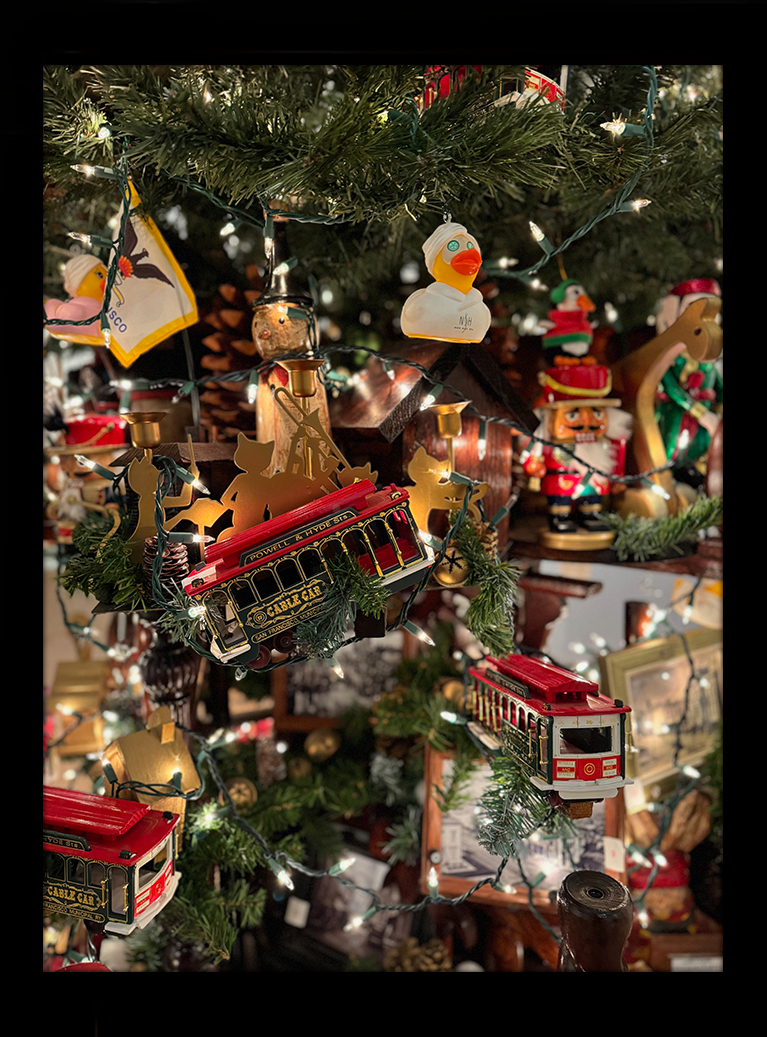 |
||
|
||
|
||
One of the 18 framed images on the holiday tree constructionThe discovery of gold nuggets in the Sacramento Valley in early 1848 sparked the Gold Rush, arguably one of the most significant events to shape American history during the first half of the 19th century. As news spread of the discovery, thousands of prospective gold miners traveled by sea or over land to San Francisco and the surrounding area; by the end of 1849, the non-native population of the California territory was some 100,000 (compared with the pre-1848 figure of less than 1,000).The population of San Francisco exploded from 1848 to 1850. Miners lived in tents, wood shanties, or deck cabins removed from abandoned ships.To meet the demands of the arrivals, ships bearing goods from around the world came to San Francisco. Ships' captains lost their crews who upon arrival quickly deserted to go to the gold fields. The wharves and docks of San Francisco became a forest of masts, as hundreds of ships were abandoned. Enterprising San Franciscans turned the abandoned ships into warehouses, stores, taverns, hotels, and one into a jail. Many of these ships were burned in fires, or they used for to create more buildable land in the boomtown.For more on the Gold Rush |
||
|
||
|
||
|
||
One of the 18 framed images on the holiday tree constructionMillionaire's Row on Nob Hill in San Francisco |
||
|
||
|
||
|
||
Adolf Sutro |
||
|
||
|
||
Sutro Baths |
||
|
||
|
||
 |
||
|
||
One of the 18 framed images on the holiday tree constructionThe Mark Hopkins mansion that stood at California and Mason burned in the 1906 Great Fire. The Intercontinental Mark Hopkins Hotel now stands on the site.In 1878, when the Mark Hopkins mansion was still under construction, the photographer Eadweard Muybridge climbed into the highest top turret with his cumbersome large plate box camera and captured his now famous panoramic view of San Francisco.It was shot in thirteen separate frames. His original photograph is seventeen feet long and was taken sometime in the early summer of 1878.To view the panorama, and learn more about Eadweard Muybridge, click here. http://www.ronhenggeler.com/History/Muybridge/muybridge_index.html |
||
|
||
|
||
The San Francisco Historical Sociey exists to uncover, preserve, and present,
|
||
|
||
The Holiday Tree construction in the lobby of the Huntington Hotel in 2014.Happy Holidays! Merry Christmas! Happy Hanukah! Happy Kawnzaa! |
||
|
||
|
||
Happy Holidays! |
||
Newsletters Index: 2023, 2022, 2021 2020, 2019, 2018, 2017, 2016, 2015, 2014, 2013, 2012, 2011, 2010, 2009, 2008, 2007, 2006
Photography Index | Graphics Index | History Index
Home | Gallery | About Me | Links | Contact
© 2023 All rights reserved
The images oon this site are not in the public domain. They are the sole property of the
artist and may not be reproduced on the Internet, sold, altered, enhanced,
modified by artificial, digital or computer imaging or in any other form
without the express written permission of the artist. Non-watermarked copies of photographs on this site can be purchased by contacting Ron.

